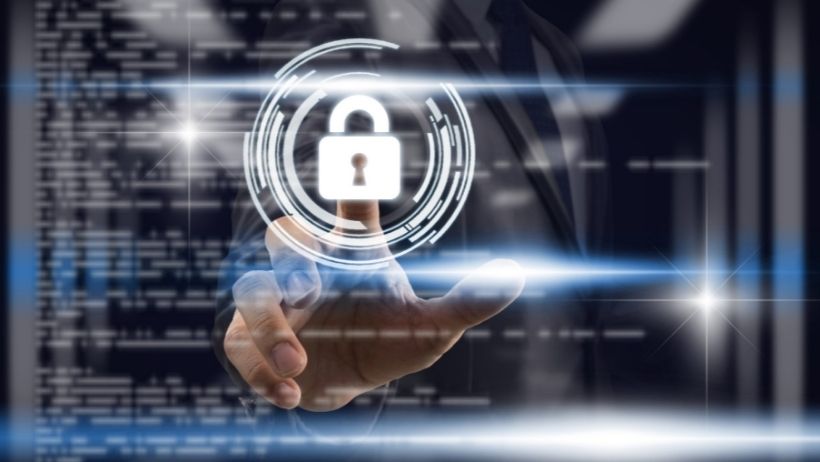Enhancing Security with Advanced Technologies: A Deep Dive into Key Terms

In today’s world, security is a paramount concern for both businesses and individuals. The advancement of technology has significantly enhanced our ability to monitor and control access to sensitive areas. At WSS Integrated Technologies, we pride ourselves on staying at the forefront of these advancements. In this blog post, we’ll explore some crucial terms and technologies in the realm of security cameras and access control, providing you with a comprehensive understanding of how these systems work to keep us safe.
Closed-Circuit Television (CCTV)
Closed-Circuit Television (CCTV) is a system where video cameras transmit signals to a specific, limited set of monitors. Unlike broadcast television, which is openly transmitted, CCTV systems are designed for surveillance purposes in private or sensitive areas such as banks, airports, military installations, and commercial properties. The main advantage of CCTV is its ability to provide continuous monitoring and recording, enabling security personnel to quickly respond to incidents and review footage when necessary.
Internet Protocol (IP) Cameras
Internet Protocol (IP) Cameras represent the modern evolution of surveillance technology. Unlike traditional analog cameras, IP cameras send and receive data over the internet. This feature allows for remote viewing and management, making it easier to monitor multiple locations from a single control center. IP cameras offer higher resolution images and advanced features such as motion detection, night vision, and video analytics, enhancing the overall effectiveness of surveillance systems.
Network Video Recorder (NVR)
An NVR (Network Video Recorder) is a specialized computer system used to record video in a digital format. Unlike a Digital Video Recorder (DVR), which works with analog cameras, an NVR is designed specifically for IP cameras. NVRs offer numerous benefits, including higher video quality, easier scalability, and better integration with modern security systems. They can store large amounts of footage and provide advanced search capabilities, making it easier to locate and review specific events.
Digital Video Recorder (DVR)
A Digital Video Recorder (DVR) records video in a digital format from analog cameras. While it is considered older technology compared to NVRs, DVRs are still widely used due to their reliability and cost-effectiveness. DVR systems convert analog signals to digital, enabling storage on hard drives or other media. They offer features like motion detection, scheduled recording, and remote access, making them a viable option for many surveillance needs.
Power over Ethernet (PoE)
Power over Ethernet (PoE) is a revolutionary technology that allows network cables to carry electrical power, along with data, to powered devices such as IP cameras, wireless access points, and VoIP phones. This simplifies installation by eliminating the need for separate power cables, reducing clutter, and lowering installation costs. PoE is particularly beneficial in locations where it is difficult or expensive to run electrical wiring. It also provides a centralized power source, which can be easily managed and monitored.
Pan-Tilt-Zoom (PTZ) Cameras
Pan-Tilt-Zoom (PTZ) Cameras are advanced surveillance cameras capable of remote directional and zoom control. They can pan (move horizontally), tilt (move vertically), and zoom in or out, offering extensive coverage and flexibility. PTZ cameras are ideal for monitoring large areas such as parking lots, stadiums, and airports. Their ability to focus on specific incidents or follow moving objects in real time makes them a valuable asset in any security system.
Access Control Systems
An Access Control System restricts access to a building or room to authorized individuals only. These systems typically use methods like key cards, biometric scanners, or PIN codes to verify identities. Access control systems are crucial for maintaining security in sensitive areas, such as data centers, laboratories, and corporate offices. They not only prevent unauthorized access but also provide detailed records of who entered and exited specific areas, enhancing overall security management.
Biometric Scanners
Biometric Scanners use unique biological characteristics such as fingerprints, retinal patterns, or facial recognition to verify the identity of individuals. This technology offers a higher level of security compared to traditional access methods like keys or PIN codes, as biometric traits are difficult to replicate or steal. Biometric scanners are increasingly used in access control systems to secure high-risk areas and ensure that only authorized personnel can gain entry.
Radio-Frequency Identification (RFID)
Radio-Frequency Identification (RFID) technology uses electromagnetic fields to automatically identify and track tags attached to objects. In access control systems, RFID is commonly used in the form of key cards or fobs that allow individuals to gain entry to restricted areas. RFID systems are convenient and efficient, providing quick and secure access while maintaining a log of entry and exit times for security purposes.
Two-Factor Authentication (2FA)
Two-Factor Authentication (2FA) adds an additional layer of security by requiring two forms of identification from the user. Typically, this involves something the user knows (like a password) and something the user has (like a fingerprint or a mobile phone). 2FA significantly enhances security by making it much more difficult for unauthorized individuals to gain access, even if they have obtained one form of authentication.
Intrusion Detection Systems (IDS)
An Intrusion Detection System (IDS) is designed to detect unauthorized access to a network or facility. IDS can be network-based, monitoring traffic for suspicious activity, or host-based, monitoring individual devices for signs of compromise. These systems are essential for identifying potential security breaches in real-time, allowing for quick responses to mitigate damage.
Motion Detection
Motion Detection is a feature in security cameras and alarm systems that detects movement within a specified area and triggers an alert or recording. This technology is useful for reducing the amount of video footage that needs to be reviewed, as it only records when there is activity. Motion detection can also be integrated with other security systems to automatically turn on lights or trigger alarms when movement is detected.
Cloud Storage
Cloud Storage is a method of storing data on remote servers accessed via the internet. For security systems, cloud storage offers numerous advantages, such as off-site backup, easy scalability, and remote access to footage. Storing surveillance footage in the cloud ensures that it is safe from physical damage or theft, and can be accessed from anywhere with an internet connection.
Intercom Systems
An Intercom System allows communication between people in different parts of a building. Intercoms are often integrated with access control systems to verify the identity of visitors before granting them entry. They enhance security by enabling direct communication between security personnel and individuals at entry points, ensuring that only authorized individuals are allowed access.
Smart Locks
Smart Locks are electromechanical locks that can be controlled remotely via a smartphone or computer. These locks often integrate with home automation systems, providing convenience and enhanced security. Smart locks offer features such as temporary access codes for guests, activity logs, and the ability to lock or unlock doors remotely. They are an excellent choice for both residential and commercial properties looking to upgrade their security systems.
The integration of these advanced technologies into security and access control systems significantly enhances their effectiveness and reliability. At WSS Integrated Technologies, we are dedicated to providing state-of-the-art security solutions that meet the evolving needs of our clients. Understanding these key terms and technologies is the first step in ensuring that your security system is robust, efficient, and capable of protecting your assets and personnel.
For more information on how we can help secure your premises with the latest technology, feel free to contact us. Together, we can build a safer future.
- The Role of Continuous Monitoring and Analysis in Intrusion Detection - September 6, 2024
- Understanding Crucial Terms and Technologies in Fire Alarm Systems - August 30, 2024
- The Anatomy of a Fire Alarm System: Essential Components for Complete Protection - August 23, 2024
